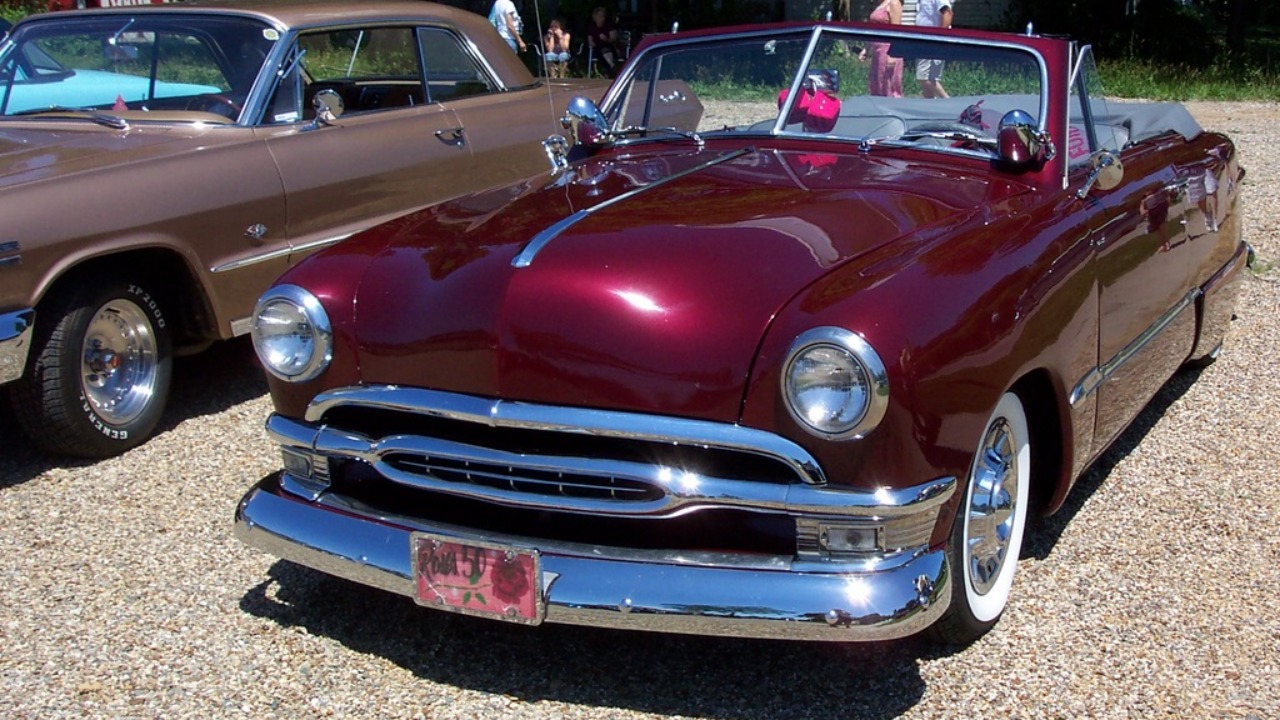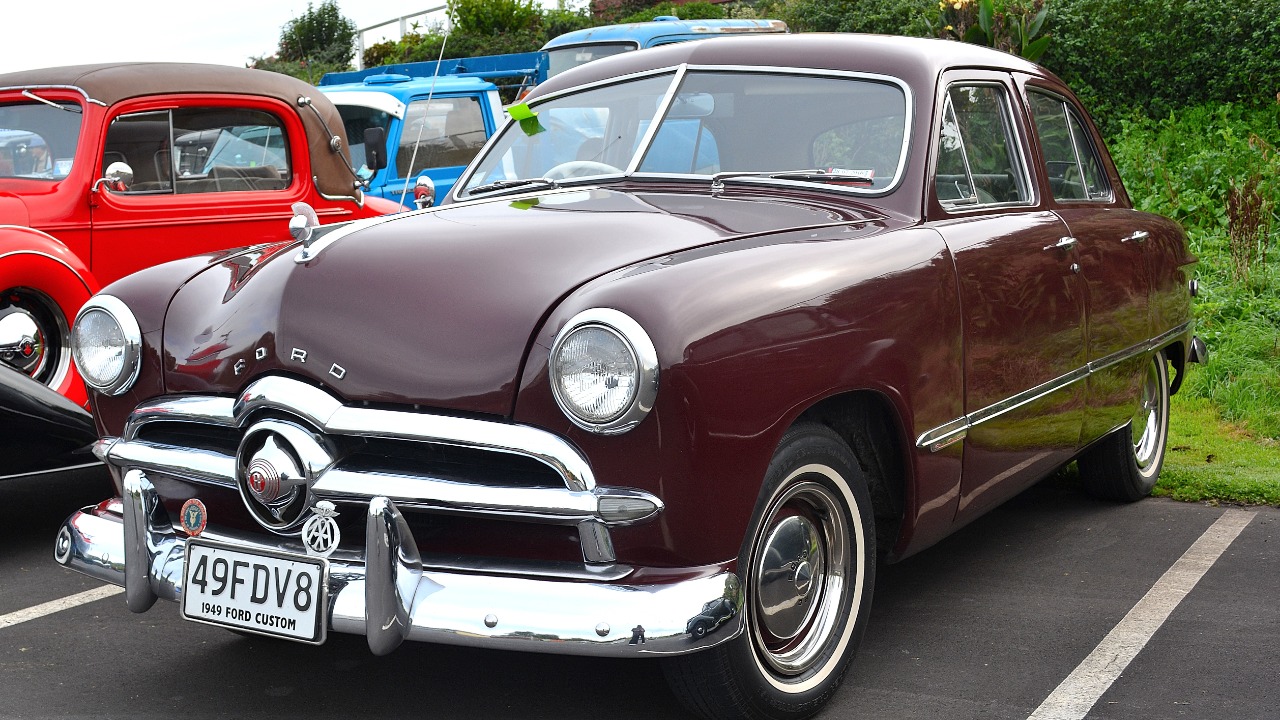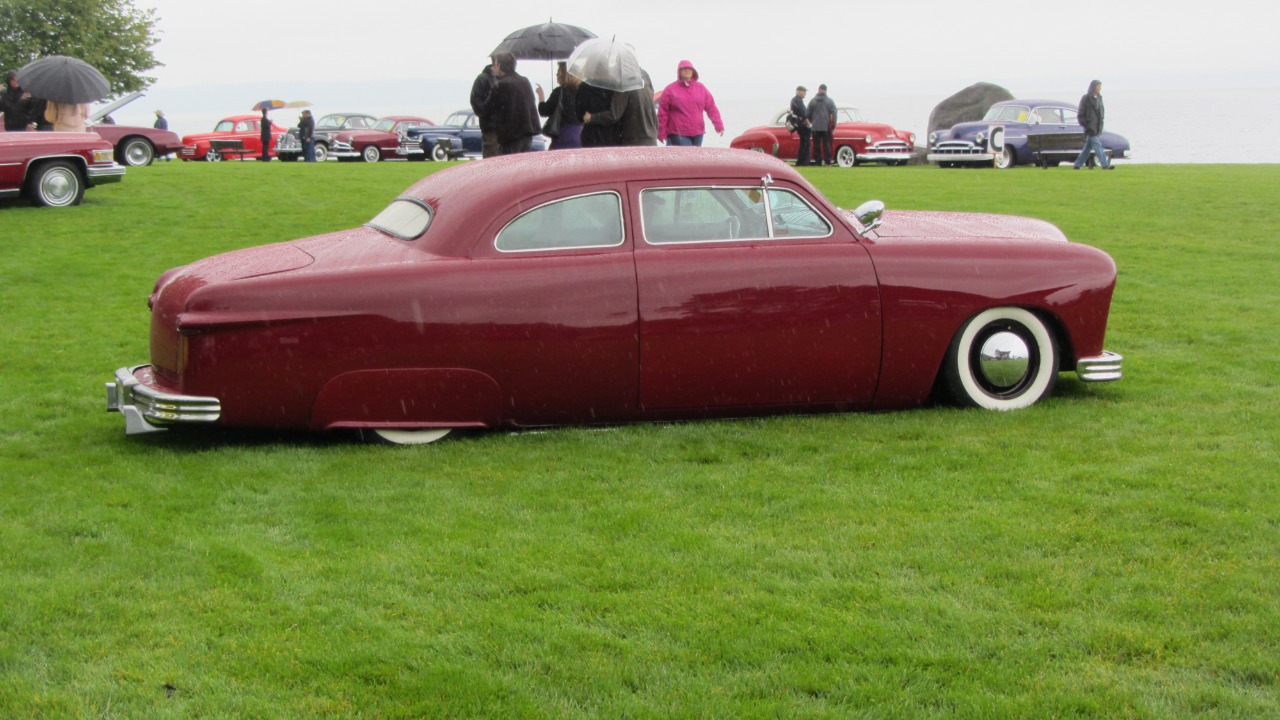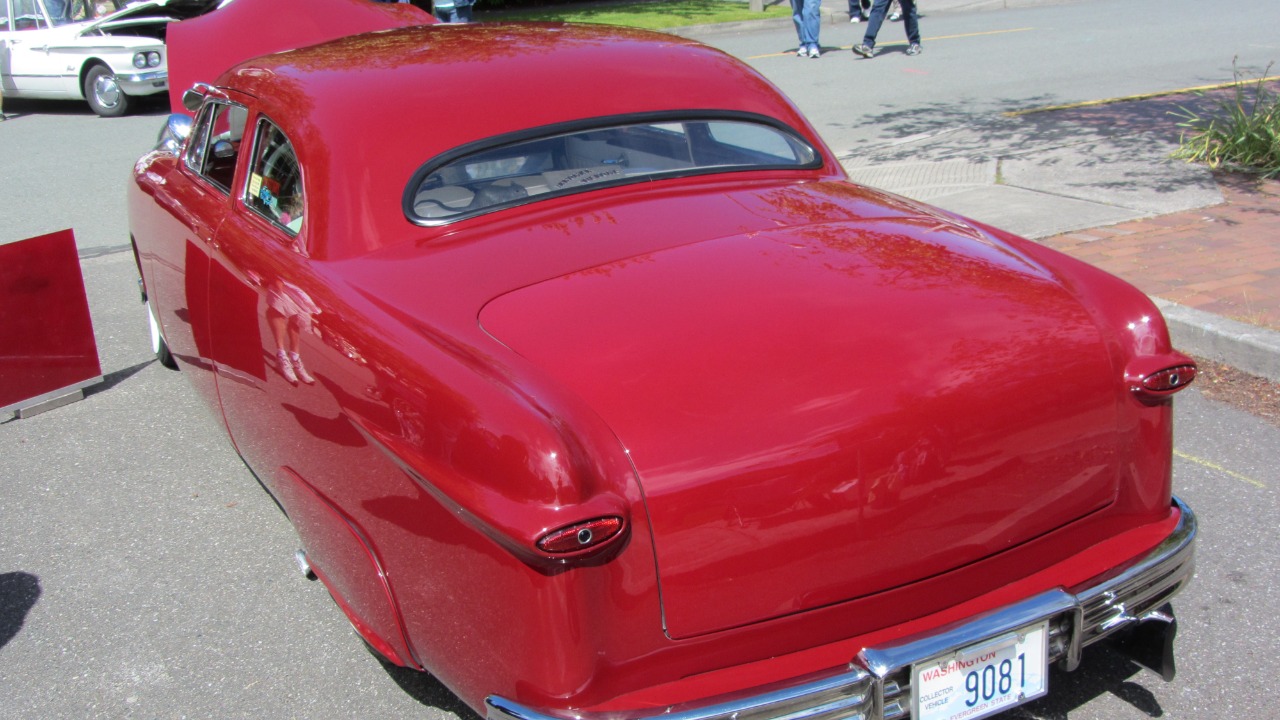
The 1949 Ford, affectionally tagged as the ‘Shoebox,’ stands as a timeless piece of the American automotive mosaic. This classic car didn’t merely add a new model to Ford’s lineup; it revolutionized the design paradigm and left an indelible mark on automotive culture. Let’s embark on a journey to uncover the origins of this unique nickname and the impact of this iconic vehicle.
The History of the 1949 Ford

The 1949 Ford made its debut at a time when the American automotive industry was transitioning from the pre-war era’s design principles. Unlike its predecessors, the 1949 Ford showcased a modern design that diverged from the traditional separate-fender body. The new integrated body and fender configuration were a radical departure that set the 1949 Ford apart and paved the way for future automotive design trends.
Equally remarkable were the technological enhancements. The 1949 Ford featured a new ladder frame, independent front suspension, and longitudinal engine layout, which improved handling and ride quality significantly. Consequently, this innovative vehicle quickly became popular, asserting Ford’s position in the fiercely competitive post-war car market.
Why ‘Shoebox’?

The nickname ‘Shoebox’ was inspired by the car’s design. Unlike the curvaceous and streamlined designs prevalent in the 1940s, the 1949 Ford sported a more rectangular and slab-sided design. Quite simply, it looked like a shoebox on wheels. This simple, yet distinct design was a stark contrast to its contemporaries, and soon the term ‘Shoebox’ became synonymous with the 1949 Ford.
Interestingly, the ‘Shoebox’ design was not a marketing gimmick; it was a practical decision. The simple and straightforward design made the car more economical to produce, contributing to its competitive pricing. This cost efficiency, coupled with the car’s modern aesthetics, made the 1949 Ford an appealing choice for a wide range of consumers.
Influence of the Shoebox Design

The ‘Shoebox’ design had a profound impact on the automotive industry, influencing car designs for decades to come. Its simplicity and functionality were widely adopted by other car manufacturers. Even the European design, which had traditionally favored separate fenders, began to adopt the integrated body and fender style, as illustrated by the Ponton-style Mercedes-Benz models.
Moreover, the 1949 Ford became a favorite among custom car builders and hot-rodders. Its flat surfaces and simple lines made it an ideal canvas for customization. This popularity among the custom car community further cemented the ‘Shoebox’ Ford’s place in automotive history.
Cultural Impact of the 1949 Ford ‘Shoebox’

The 1949 Ford didn’t just transform the automotive industry; it also became a cultural icon. The car made its way into various aspects of popular culture, appearing in movies, songs, and literature. It can even be found in the works of famed beat generation writer Jack Kerouac, further highlighting its cultural significance.
The ‘Shoebox’ Ford played a significant role in establishing the post-war American car culture. It was not merely a means of transportation; it was a symbol of freedom and the American Dream. This cultural impact can be further explored in the book ‘The Automobile and American Life’, which delves into the intertwined history of American cars and society.
The Legacy of the ‘Shoebox’

More than seven decades later, the 1949 Ford continues to hold a special place in the hearts of car enthusiasts. The nostalgia it invokes, the simplicity of its design, and the freedom it symbolizes continue to resonate with people. It remains a popular choice in classic car shows and auctions, demonstrating its enduring appeal.
Today, the 1949 Ford is not merely a car; it’s a cherished piece of Americana. Its influence can be seen in modern reinterpretations like the 2001 Ford Forty-Nine Concept, a tribute to the Shoebox’s timeless design. From restoration projects to scale models, the ‘Shoebox’ Ford continues to captivate, proving that good design truly is timeless.